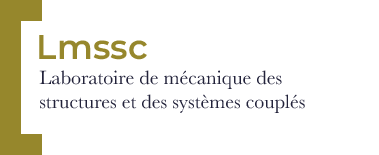Performances of two sparse Bayesian filters for force reconstruction
Résumé
Structures undergo some mechanical impacts during their life phase, which may create high vibration levels that induce damage and failure of the system itself. However, the mechanical characteristics of the shock are often not well known and inverse methods are generally used to estimate these complex sources. Among all the existing methods, Kalman filtering provides a lightweight and elegant solution to solve force reconstruction problems in time domain. From the filters existing in the literature to solve the sequential input-state estimation problems, a unified Bayesian formulation is established. Through this general Bayesian framework, new Kalman-like filters can be derived by choosing different sets of hypotheses. Thus, two particular filters that promote the spatial sparsity of the excitation field are derived from this unifying Bayesian vision : the Sparse adaptive Bayesian Filter (SaBF) and its element-wise version (EWBF). The originality of these two filters lies on the generalized Gaussian distribution used to predict the input vector, with a nested Bayesian optimization to compute its parameters. The performances of these filters in terms of reconstruction accuracy are evaluated through a numerical experiment as well as a real-world application. In the present contribution, the input estimation is of primary interest, so the results related to the state estimation are not presented. A comparison of these original filters with the Augmented Kalman Filter (AKF), which is a state-of-the-art joint input-state estimation filter, is also proposed. Actually, it is shown that the results from SaBF and EWBF outperform those from the existing filters in terms of input estimation quality, as they remove the drift effect, which causes important global error on the force value over time.

